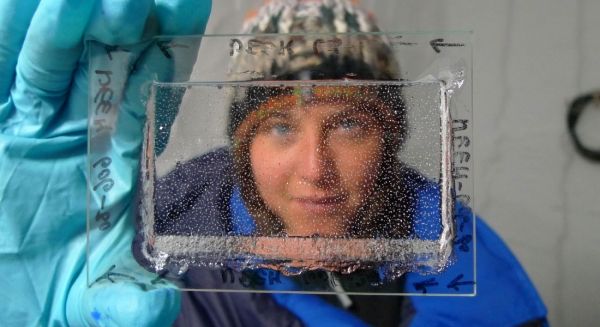Throughout the last ice age, the climate changed repeatedly and rapidly during so-called Dansgaard-Oeschger events, where Greenland temperatures rose between 5 and 16 degrees Celsius in decades. When certain parts of the climate system changed, other parts of the climate system followed like a series of dominos toppling in succession. This is the conclusion from an analysis of ice-core data by a group of researchers that included postdoc Emilie Capron and associate professor Sune Olander Rasmussen from the Section for the Physics of Ice, Climate and Earth at the Niels Bohr Institute, University of Copenhagen, in Denmark.
This discovery, just published in the journal Nature Communications, is concerning because the extent of sea ice in the Arctic played an important part in these dramatic climate shifts of the past. Today, sea-ice extent is being rapidly reduced, and it is uncertain whether this part of the climate system can trigger sudden future climate change.
Understanding abrupt climate changes in the past is critical to our ability to confidently predict whether something similar will occur today or in the near future.
Over the last several decades, this has led climate scientists to search for causal relationships of abrupt climate change during the ice age when Greenland temperatures repeatedly rose by as much as 16 degrees Celsius in just decades before slowly falling back to normal ice-age levels.
Read more at University of Copenhagen - Faculty of Science
Image: The study's lead author Emilie Capron looks through a thin, polished piece of ice core from the NEEM ice core which was drilled through the Greenland ice cap. Ice cores consist of compressed snow, and a small amount of air is sealed in bubbles during the compression. Ice-core scientists reconstruct the composition of the atmosphere of the past by analysing these bubbles. (Photo: Sepp Kipfstuhl)


